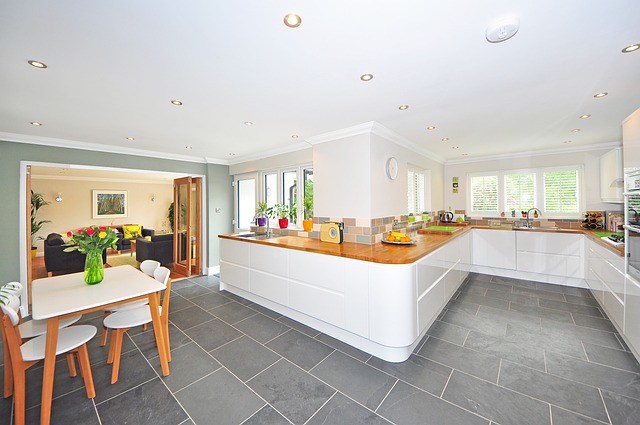Sustainable homes represent a significant evolution in residential architecture, emphasizing eco-friendly practices and environmental stewardship. These homes integrate green materials, passive solar design for optimized natural light and heat, and energy-efficient features like high-performance insulation and windows to minimize the need for artificial heating and cooling. Homeowners are adopting water conservation methods such as rainwater harvesting and xeriscaping, along with the installation of solar panels, which contribute to reducing carbon footprints and offer economic benefits over time. The use of sustainable materials, focus on indoor air quality, and designs that allow for adaptability without significant renovations underscore the commitment to a healthier and more sustainable living environment. The trend towards sustainable homes is accelerating, with innovative materials and construction methods enhancing energy efficiency and utilizing renewable energy sources like solar panels. This movement is supported by government incentives and reflects a growing recognition of the importance of sustainability in the built environment, suggesting that sustainable home designs will become the norm in the housing market.
Explore the transformative wave of residential properties redefining eco-conscious living. This article delves into the burgeoning trend of sustainable homes, highlighting their innovative designs and features that prioritize energy efficiency, renewable energy integration, and water conservation. We’ll traverse the use of green building materials and practices, and their impact on community wellbeing and lifestyle enhancement. Discover how these dwellings harmonize with nature, incorporate smart technology to promote health, and build resilience against climate change, making them a pivotal choice for sustainable living. Join us as we examine the integral role of sustainable homes in shaping a greener future.
- Embracing Eco-Friendliness: The Rise of Sustainable Homes
- Key Features of Sustainable Residential Design
- – Energy Efficiency and Renewable Energy Systems
Embracing Eco-Friendliness: The Rise of Sustainable Homes
In recent years, the concept of sustainability has permeated various aspects of modern living, and residential properties are no exception. The rise of sustainable homes represents a significant shift in how we approach home design and construction. These homes are meticulously crafted to minimize environmental impact, from the materials used in their creation to the energy-efficient technologies that power them. Homeowners and developers alike are increasingly recognizing the importance of integrating eco-friendly practices into residential architecture. By utilizing green building materials, such as recycled steel or bamboo, and incorporating passive solar design principles, these homes reduce carbon footprints and create healthier living environments. Additionally, features like rainwater harvesting systems, xeriscaping, and solar panels are becoming more commonplace, further emphasizing the commitment to a sustainable lifestyle within the confines of one’s own home. This movement towards sustainability in residential properties not only benefits the environment but also offers long-term economic savings for residents. As awareness grows, the demand for sustainable homes is likely to continue its upward trajectory, signaling a future where eco-conscious living is the norm rather than the exception.
Key Features of Sustainable Residential Design
Sustainable homes are a testament to innovative design and environmental responsibility, integrating key features that ensure they are in harmony with their surroundings. These homes often incorporate passive solar design, maximizing natural light and heat during colder months while minimizing overheating during warmer seasons. High-performance insulation and energy-efficient windows are commonplace, reducing the need for artificial heating and cooling and thus conserving energy. Rainwater harvesting systems and water-efficient landscaping contribute to the conservation of freshwater resources, a critical aspect of sustainable living.
Moreover, the choice of building materials plays a pivotal role in sustainable home design. Materials are typically sourced locally to reduce transportation emissions, and those used are often recycled or sustainably harvested. The construction process itself is planned with minimal environmental impact, from the outset. Indoor environmental quality is also prioritized, with attention to air flow and ventilation systems that ensure healthy indoor air quality for residents. Additionally, sustainable homes are often designed to be adaptable, allowing inhabitants to modify their living spaces without significant alterations, which extends the lifespan of the building and reduces waste. These homes are not just structures; they are a symbiotic integration of architecture, technology, and nature, all working in concert to provide a healthier, more sustainable living environment.
– Energy Efficiency and Renewable Energy Systems
Sustainable homes are increasingly being designed with a focus on energy efficiency, leveraging advanced materials and construction techniques to minimize heat loss and maximize natural light, which in turn reduces the reliance on artificial lighting and heating. These residences often incorporate high-performance windows, superior insulation, and smart home technologies that optimize energy consumption. Additionally, integrating renewable energy systems such as solar panels, wind turbines, or geothermal heat pumps becomes more feasible in these structures. Solar panels are particularly popular, harnessing the power of the sun to generate electricity, which can significantly offset grid electricity use. The integration of these systems not only contributes to a smaller carbon footprint but also offers homeowners the potential for long-term savings on energy bills. As a result, sustainable homes contribute to a healthier environment while providing economic benefits, making them an attractive option for environmentally conscious individuals and a growing segment of the market. The adoption of such systems is facilitated by government incentives and technological advancements, further encouraging the transition towards more sustainable living practices.
In conclusion, sustainable homes represent a significant evolution in residential property design, embodying a harmonious blend of energy efficiency and renewable energy systems. As the demand for eco-conscious living spaces grows, these homes stand as testaments to innovation and environmental responsibility. Homeowners are increasingly recognizing the long-term value and benefits of sustainable homes, not just for personal health and comfort but also for their ecological footprint. The shift towards sustainability in residential design is a promising indicator of our collective commitment to a greener future, ensuring that the homes we live in support both our well-being and the preservation of our planet’s resources.
